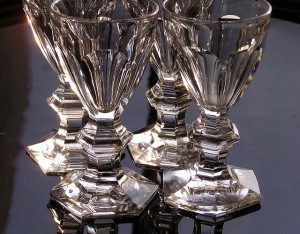Glass Dress A Fashion Week Hit
Dion Lee, an Australian fashion designer brought a glass dress to last month’s Mercedes Benz Fashion Week Australia 2016. The dress that Lee sent down the runway wasn’t what he originally had in mind. He’d originally wanted the A-line shift to be longer, but thought that a longer dress would prove too challenging for the model. The dress, which was made from fishing line and Swarovski crystals, topped the scales at a whopping 33 pounds! Making the dress longer would also have made it heavier – possibly too heavy to wear.
How are glass crystals made?
Chances are that you’ve seen crystal, but you may not know what distinguishes crystal from glass. Ordinary glass is made from silica, lime and soda. That’s the most common basic “recipe” for glass – sometimes called soda-lime glass. Soda-lime glass accounts for about 90% of the glass that’s made today.
Crystal is similar to glass, but the “recipe” is a slight variation. Crystal – also known as “lead crystal” – is made from silica, lead oxide, soda or potash. It can also contain other elements. For better or worse, lead has long been prized for its durability, and its ability to make other things (including paint and glass) more durable. In the United States, the “crystal” label is given to glass that has a lead content of at least 1%. European standards for crystal are much higher. To earn the designation of crystal in Europe, glass must have a lead content of 10%-30%.
Crystal is used primarily for drinking glasses and decorative glass. Lead crystal is a good decorative medium because lead changes the working time and temperature of glass. Ordinary glass needs to be heated to a certain temperature, and can only be worked for a short time before it cools too much to remain pliable.
When lead oxide is added to glass, it not only lowers the temperature to which the glass must be heated, but also it extends the amount of “working time” of the molten glass. A longer working time means that designers have a longer period of time to make more intricate, more decorative glass pieces.
One effect of the longer working time of leaded crystal is that the resulting pieces are thinner than ordinary glass. Thinness comes at a price, however. Leaded crystal is more prone to breakage and surface damage. Thin doesn’t mean lightweight, though. Crystal is often heavier than similarly sized soda-lime glass, thanks to the weight of the lead inside.
If you’d like more information about decorating with glass, please check out the rest of our site. If you’d like to purchase Glassprimer™ glass paint, please visit our online store .
Photo Credit: Liz West, via Flickr.com

